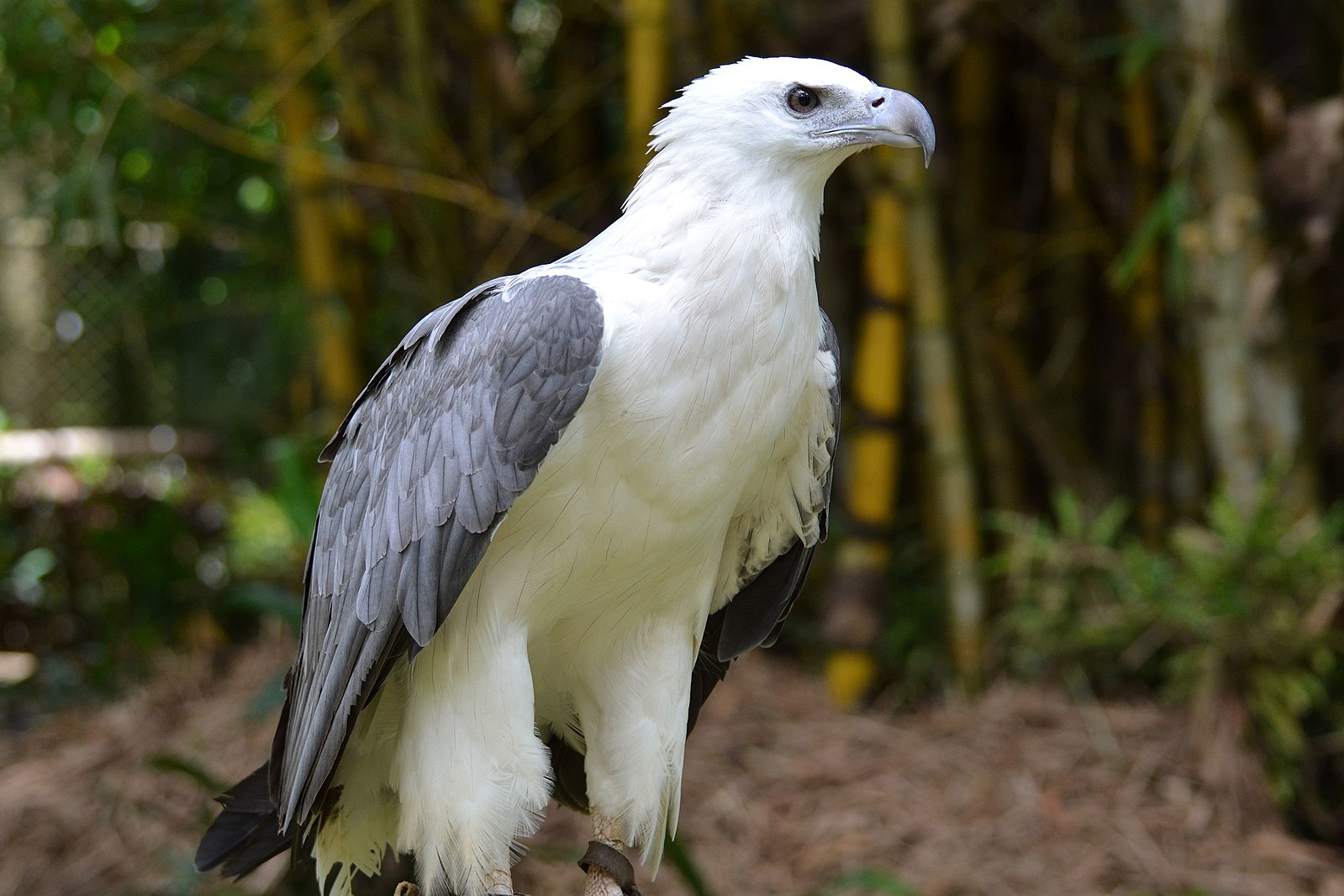The white-bellied sea eagle, scientifically known as Haliaeetus leucogaster, is a large bird of prey found in Asia and Australasia. Its distinctive nose, or beak, is a key feature that sets it apart from other eagle species.
The Beak of the White-Bellied Sea Eagle
The beak of the white-bellied sea eagle is large, hooked, and a leaden blue-grey color with a darker tip. The cere, the area surrounding the nostrils, is also lead grey. This unique beak shape and coloration are essential for the eagle’s hunting and feeding behaviors.
Size and Shape
- The beak of the white-bellied sea eagle is large and powerful, measuring between 4.5 to 6.5 cm (1.8 to 2.6 inches) in length.
- The beak is strongly hooked, with a sharp, curved tip that is well-suited for tearing and ripping prey.
- The shape of the beak helps the eagle to grasp and hold onto slippery fish and other aquatic prey.
Coloration
- The beak of the white-bellied sea eagle is a distinctive leaden blue-grey color, with a darker tip.
- The cere, the area surrounding the nostrils, is also lead grey in color.
- This coloration helps to camouflage the eagle’s beak, making it less visible to its prey in the water and from the air.
Hunting and Feeding Behaviors
 Image source: bellied sea eagle by shankar s
Image source: bellied sea eagle by shankar s
The white-bellied sea eagle’s unique beak is essential for its hunting and feeding behaviors.
Fishing
- The eagle’s hooked beak is well-suited for grasping and tearing apart fish, its primary prey.
- The eagle often hunts by perching in trees or on rocks near the water’s edge, waiting for an opportunity to swoop down and snatch a fish from the surface.
- Once the eagle has caught a fish, it uses its beak to tear the flesh and consume the meat.
Scavenging
- The white-bellied sea eagle is also known to scavenge for food, often gathering in large groups at garbage dumps to feed on waste materials.
- The eagle’s powerful beak allows it to tear apart and consume a variety of scavenged items, including carrion and other discarded food.
Nesting and Breeding
The white-bellied sea eagle’s beak also plays a role in its nesting and breeding behaviors.
Nest Building
- The eagle uses its beak to gather and manipulate sticks, branches, and other materials to build its large, bulky nests.
- The beak’s strength and dexterity allow the eagle to construct sturdy, well-structured nests that can withstand the elements.
Feeding Chicks
- The parent eagles use their beaks to tear and shred food, which they then feed to their chicks in the nest.
- The hooked beak is well-suited for this task, allowing the eagles to efficiently prepare and deliver food to their young.
Conservation Status
The white-bellied sea eagle is currently categorized as Least Concern by the International Union for Conservation of Nature (IUCN). However, human disturbance to its habitat is the main threat, both from direct human activity near nests which impacts on breeding success, and from removal of suitable trees for nesting.
Conclusion
The distinctive nose, or beak, of the white-bellied sea eagle is a key feature that sets this bird of prey apart from other eagle species. Its large, hooked, and uniquely colored beak is essential for the eagle’s hunting, feeding, and nesting behaviors, allowing it to thrive in its coastal and aquatic habitats. Understanding the importance of the white-bellied sea eagle’s beak is crucial for the conservation and protection of this remarkable species.
References:
- White-bellied sea eagle – Wikipedia https://en.wikipedia.org/wiki/White-bellied_sea_eagle
- White-bellied Sea-Eagle (Haliaeetus leucogaster) – M Dahlem https://mdahlem.net/birds/6/seagle.php
- White-bellied Sea-eagle | The Peregrine Fund https://peregrinefund.org/explore-raptors-species/eagles/white-bellied-sea-eagle

